Calculate Linear Feet
The TMS auto-calculates the linear feet for a Load when the Calculate Linear Feet function is enabled on TMS Admin → Configuration.
Line Items must have values for Length, Width, and Height and a selected Equipment Type to automatically calculate Linear Feet.
The maximum Length, Width, and Height dimensions for a Load are determined by the Equipment Type. In the example provided below, a Load with an Equipment Type Dry Van 53' has a maximum capacity of Length: 53 feet, Width: 8.5 feet, Height: 8.5 feet, and 26 pallets. The line item dimensions are added together to determine the total Load linear feet measurement.
The examples provided below have the same Line Items, number of pallets, and pallet measurements. The linear feet calculations are shown to highlight how the Turnable and Stackable fields impact those calculations.
Line Item calculations are based on the handling unit measurement fields.
Basic Calculation
In this example, 3 line items are included in this load with the measurements provided. No line items are turnable, and the linear feet of the the load is calculated by adding the linear feet of each line item together.

Line Item 1 is calculated to have a linear feet measurement of 8.5 based on the length
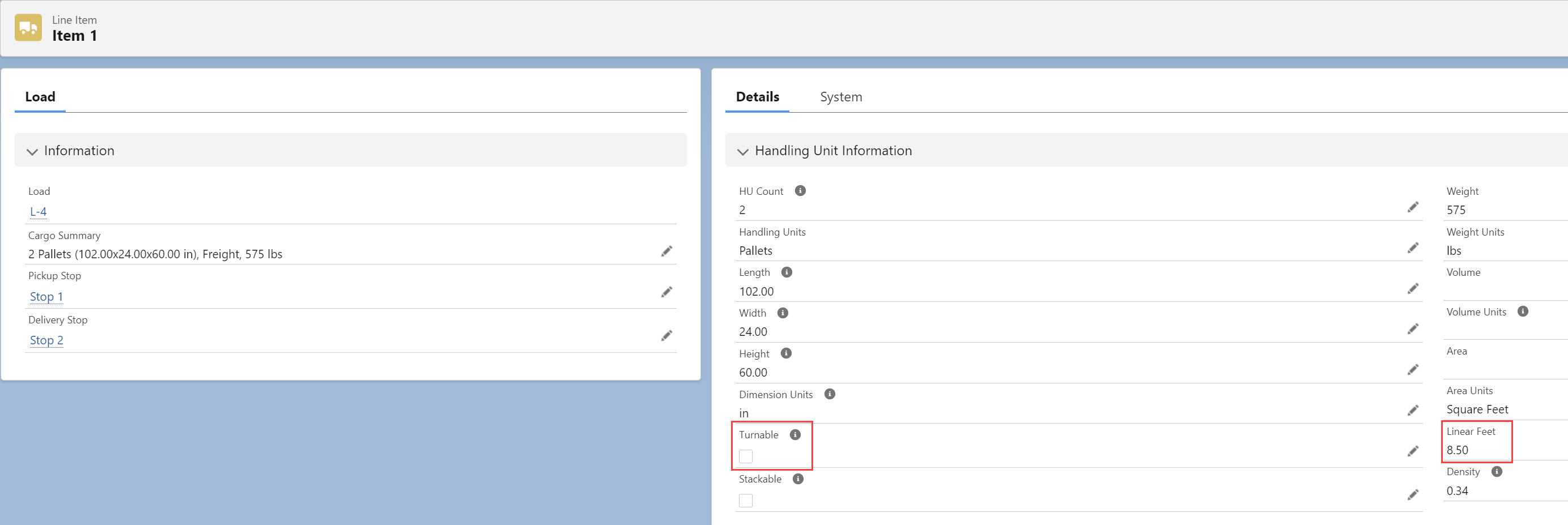
Line Item 2 is calculated as the length. The total linear feet of Line Item 2 is calculated as 4 feet
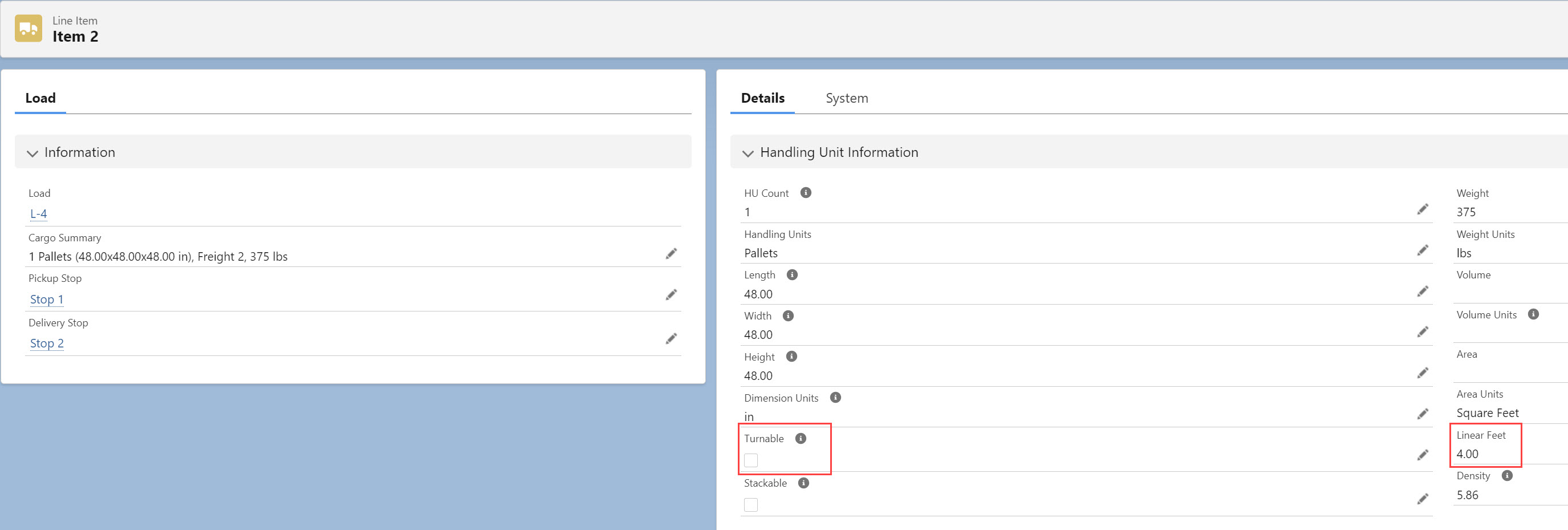
Line Item 3 is calculated to have a linear feet measurement of 8 feet based on the length
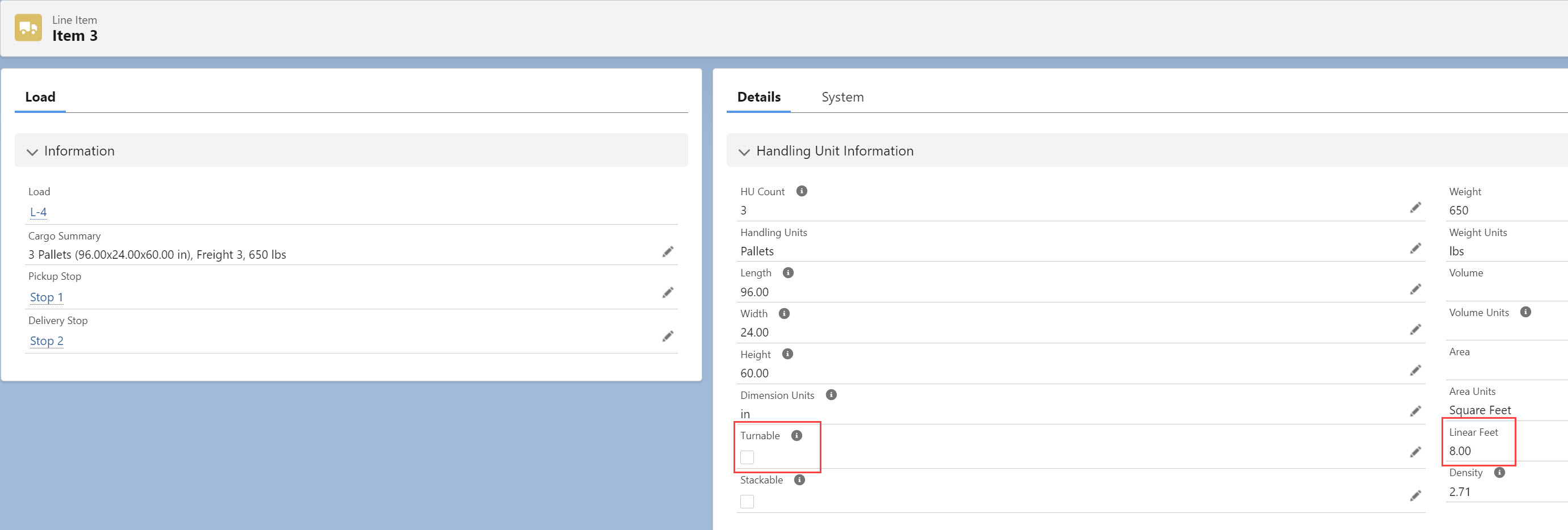
The three line items are then added together,
Turnable Line Items
Changes to the Stackable or Turnable fields cause the linear feet of the Load to recalculate. In this example, the Turnable field is checked for all 3 line items. Stackable is not checked.

As Turnable, Line Item 1 is calculated to 4 linear feet. The two pallets together are less wide than the width of the Equipment Type so the linear feet measurement is 2 pallet widths
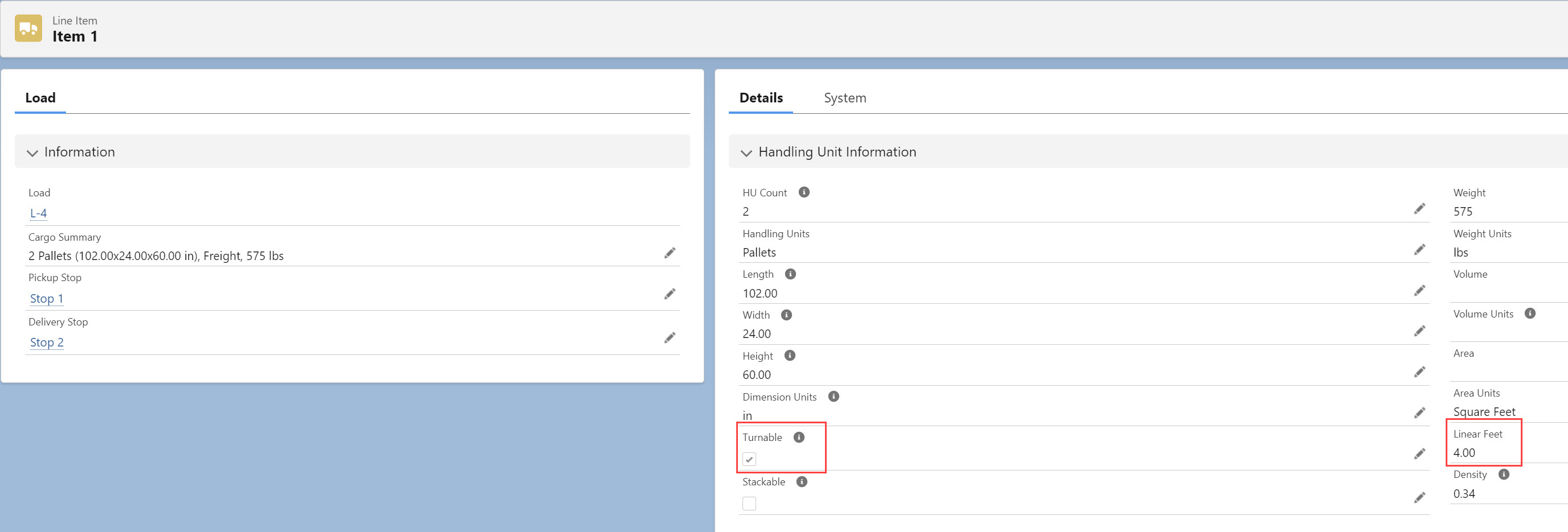
Line Item 2 is calculated to the same 4 linear feet as the basic calculation.
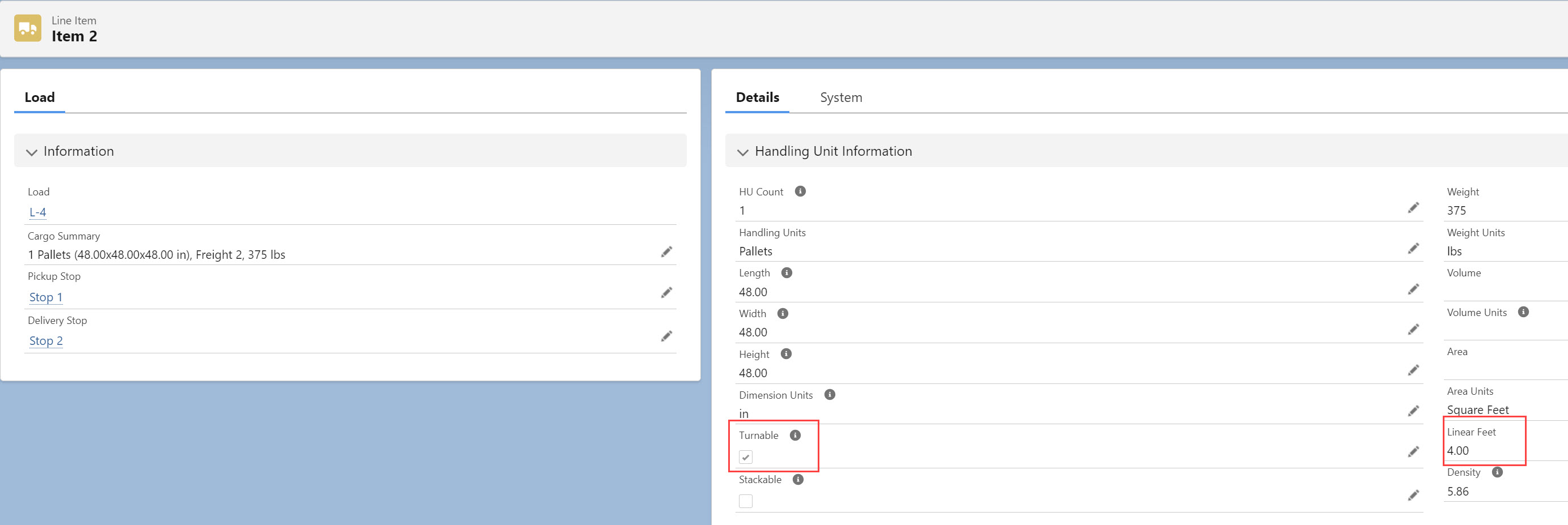
As Turnable, Line Item 3 is calculated to 6 linear feet. The three pallets added together are less wide than the width of the Equipment Type so the linear feet measurement is 3 pallet widths
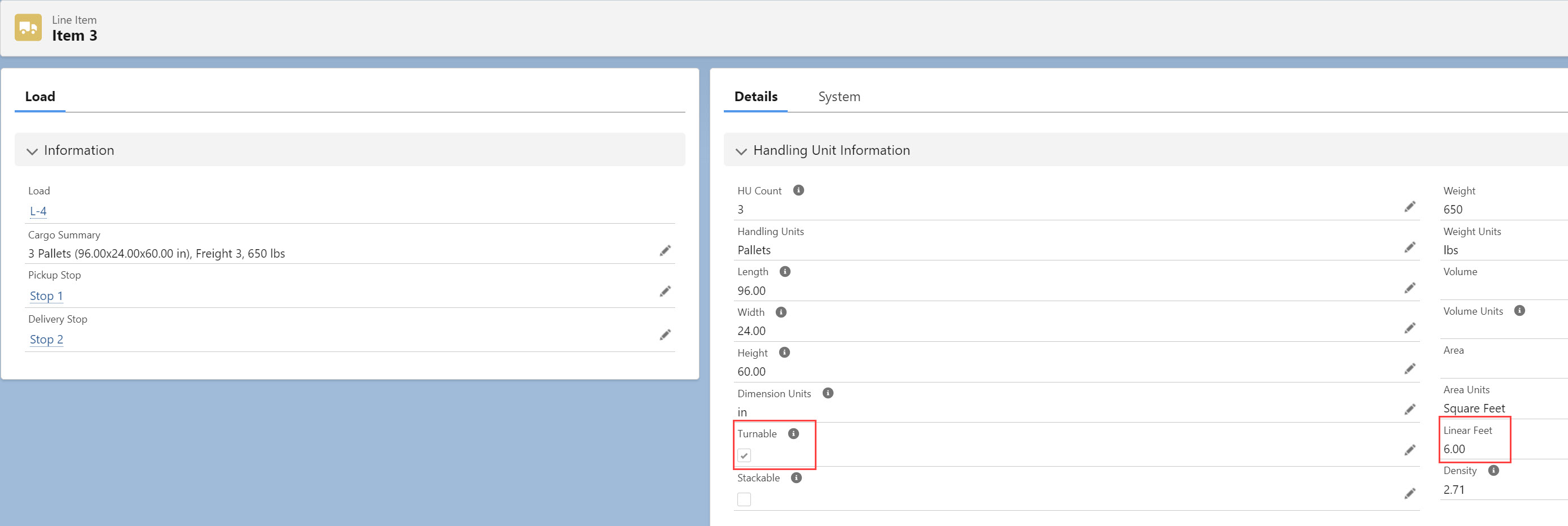
The three line items are then added together,
If the length of the line item is greater than the width of the Equipment Type, the line item calculation ignores the turnable field.
Stackable Line Items
Changes to the stackable or turnable fields cause the linear feet of the load to recalculate. In this example, the stackable field is checked for all 3 line items. Turnable is not checked.

As stackable, Line Item 1 is calculated to 8.5 linear feet. The pallets cannot be stacked. The total height is greater than the height of the Equipment Type.
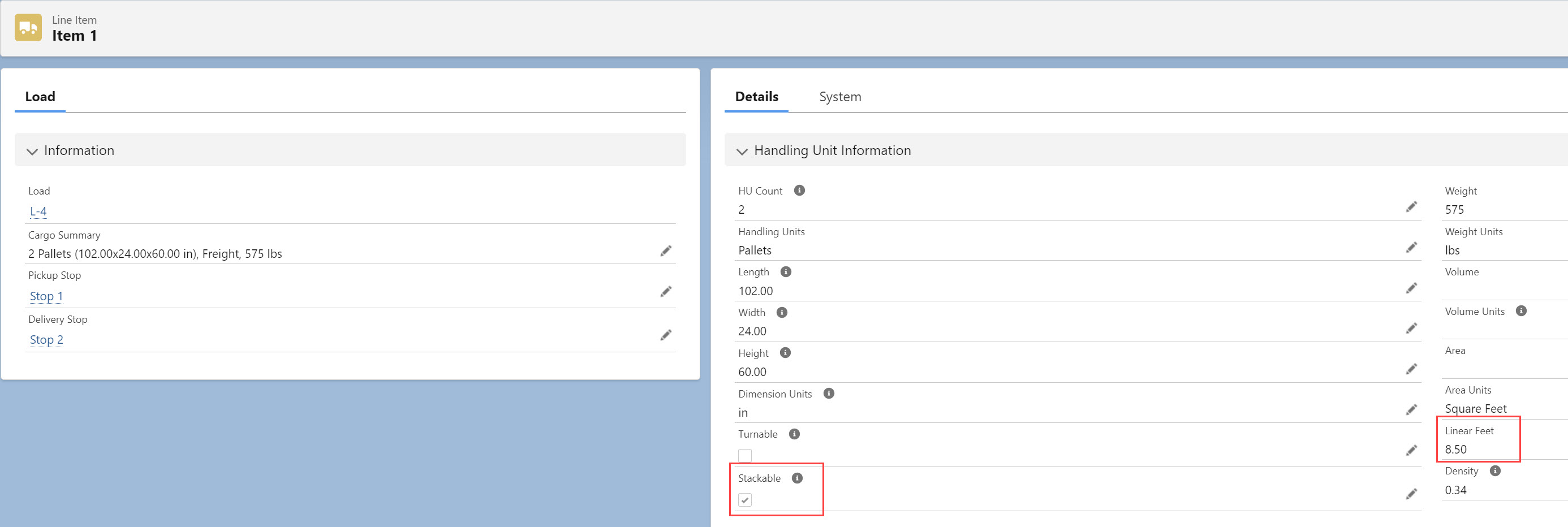
Line Item 2 is calculated to the same 4 linear feet as the basic calculation.
.jpg)
As stackable, Line Item 3 is calculated to 8 linear feet. These three pallets stacked on top of each other are greater than the Equipment Type height. The total width of the three pallets
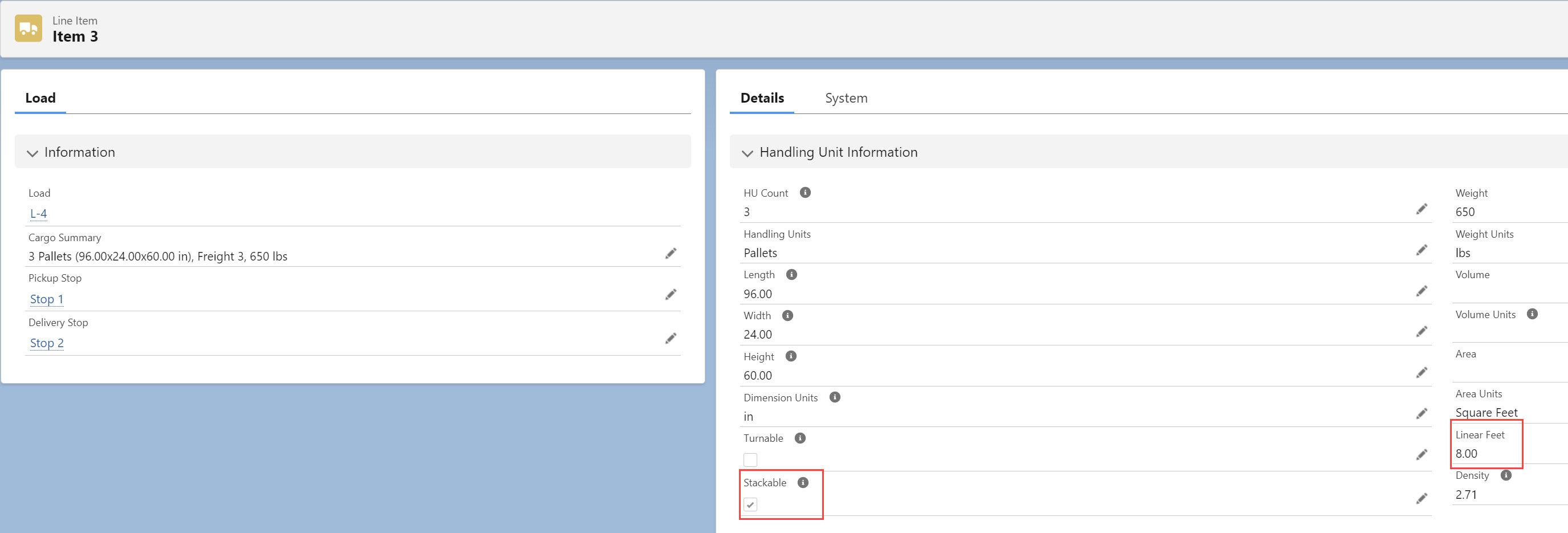
The three line items are then added together,
Turnable and Stackable
Changes to the stackable or turnable fields cause the linear feet of the Load to recalculate. In this example, the stackable and turnable fields are checked for all 3 line items.

As Stackable and Turnable, Line Item 1 is calculated to 4 linear feet. Adding the pallet heights together
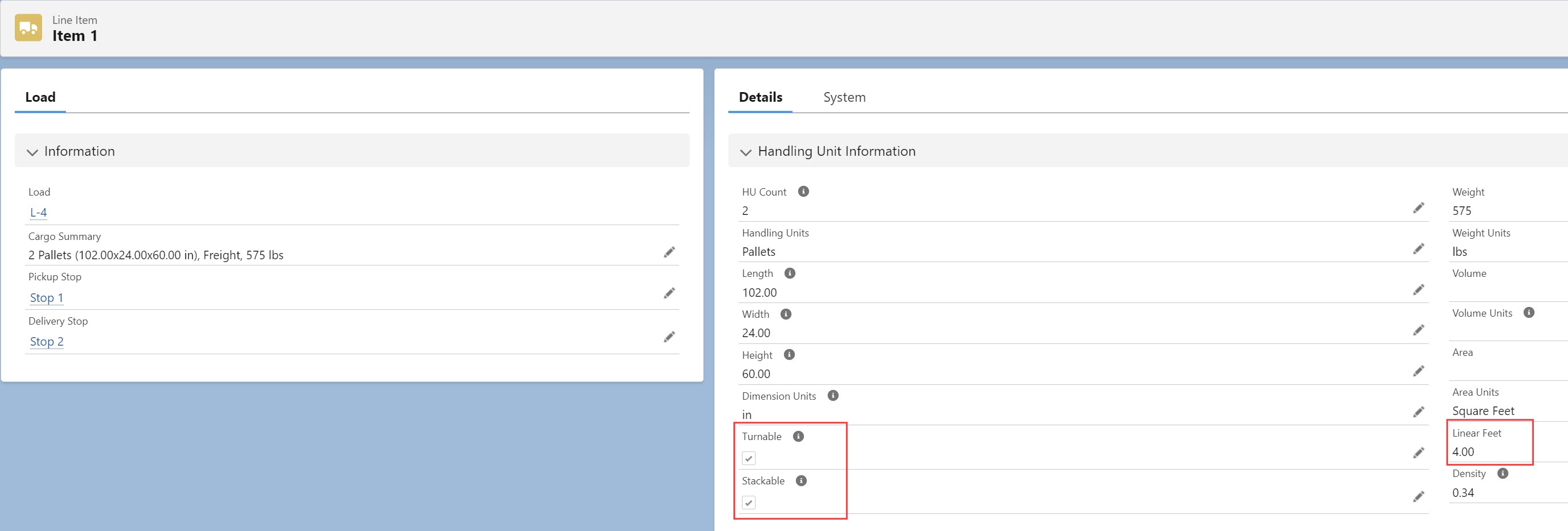
Line Item 2 is calculated to the same 4 linear feet as the basic calculation.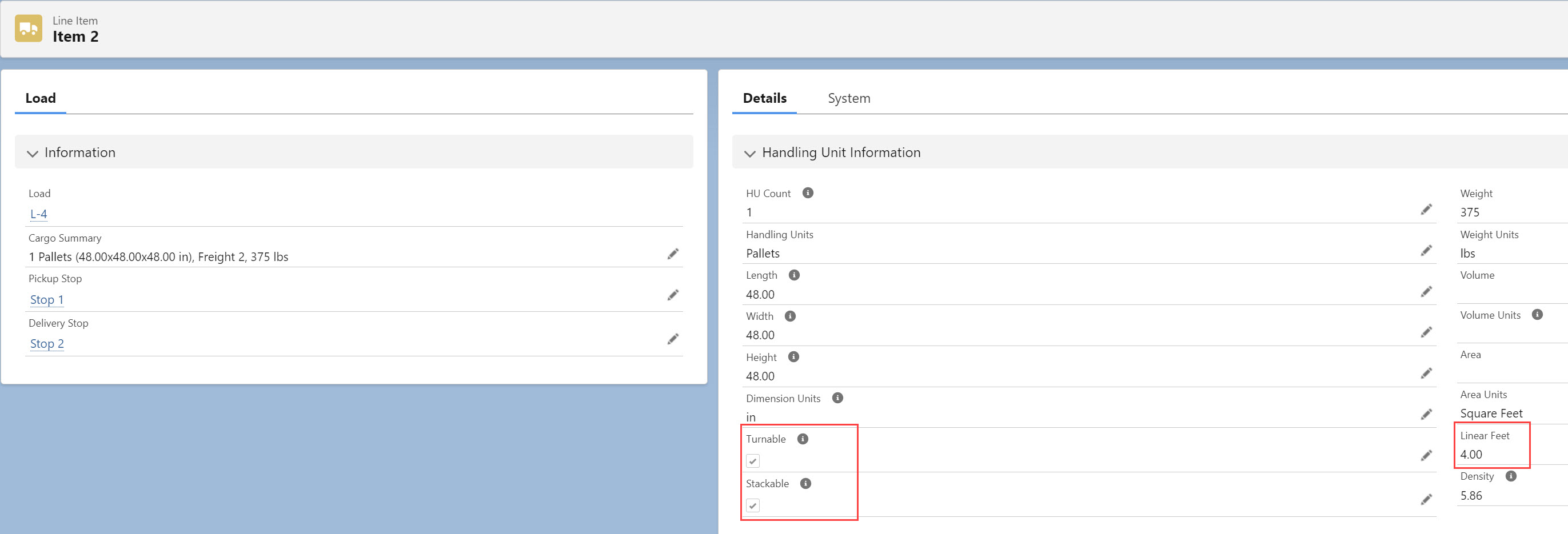
As stackable and turnable, Line Item 3 is calculated to 6 linear feet. These three pallets stacked on top of each other are greater than the Equipment Type height. Adding the pallet heights together
The total width of the three pallets
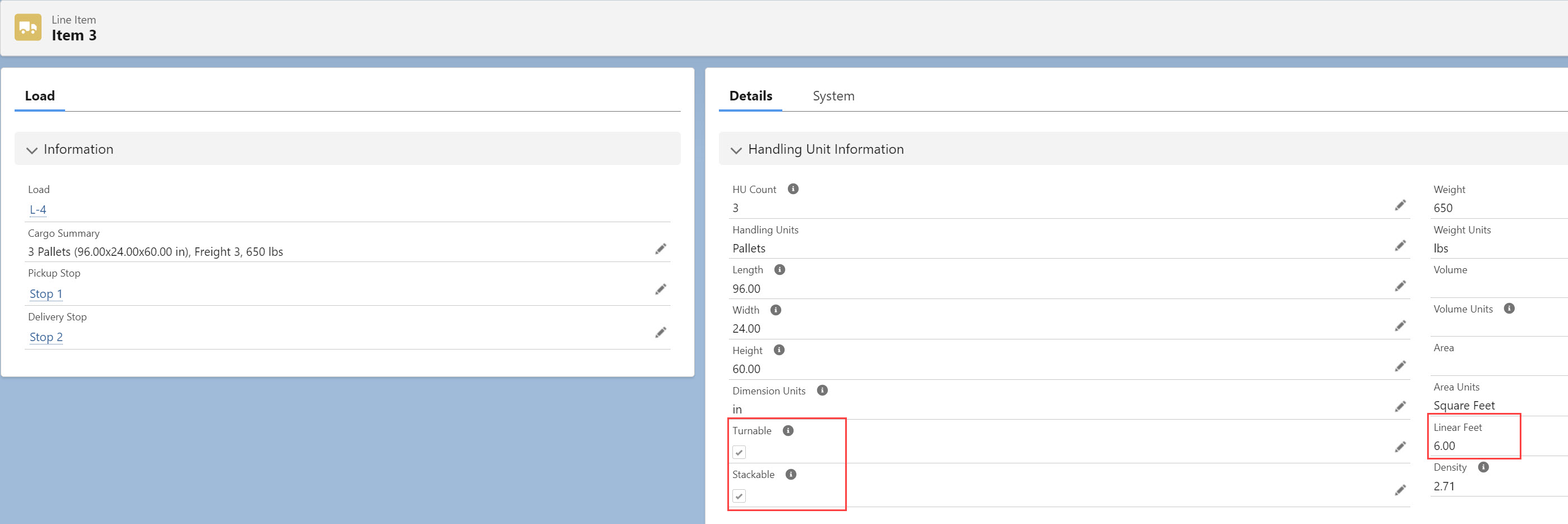
The three line items are then added together,
Extra Example
In the following example, the turnable and stackable line items remain checked as above. The height on Line Item 3 is reduced to 48in so that the pallet stacked height is less than the Equipment Type height.
.jpg)
As stackable and turnable, Line Item 3 is calculated to 4 linear feet. Adding the pallet heights together
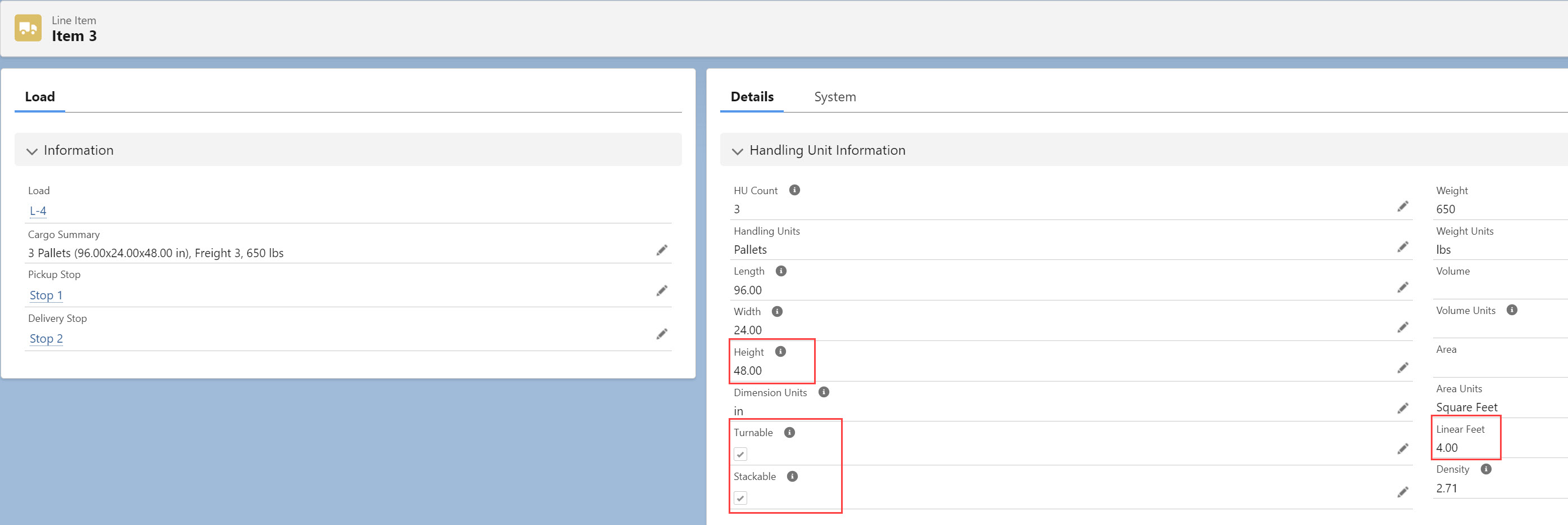
The three line items are then added together,
Line Items do not "mix" for stackable and turnable field calculations. Each line item is treated individually for stacking, turning, and linear feet calculations. The total linear feet of the load is the addition of all line item calculations.
Calculate Density
Prior to the density calculation, the TMS converts all fields to compute density as pounds per cubic feet. Handling unit measurements are converted to feet. Volume measurements are converted to cubic feet.
Handling Unit Based Density
Once converted to feet, the length, width, and height of the handling units are multiplied together with the number of handling units. The resulting calculation is the cubic feet of the load.
The total weight of the load is divided by the amount of cubic feet to calculate the density.
Volume-Based Density
The Line Item dimension (Length/Width/Height) and Handling Unit Count fields are used to calculate the Volume for each Line Item and the Total Volume of the Load.
Check the Line Item Auto-Calculate Area and Volume field and the TMS automatically calculates the volume with the Handling Unit Count and dimensions.
If the Auto-Calculate Area and Volume field is not Checked, the TMS does not calculate Line Item Volume or Load Total Volume.
The Line Item and Load volume fields must be entered manually when volume is required for quoting.
Once volumetric measurements are converted to cubic feet, the value is used in the following calculation.
The total weight of the load is divided by the amount of cubic feet to calculate the density.
In both Handling Unit and Volume-Based Density calculations, the resulting Density is then compared to provide the NMFC Class.